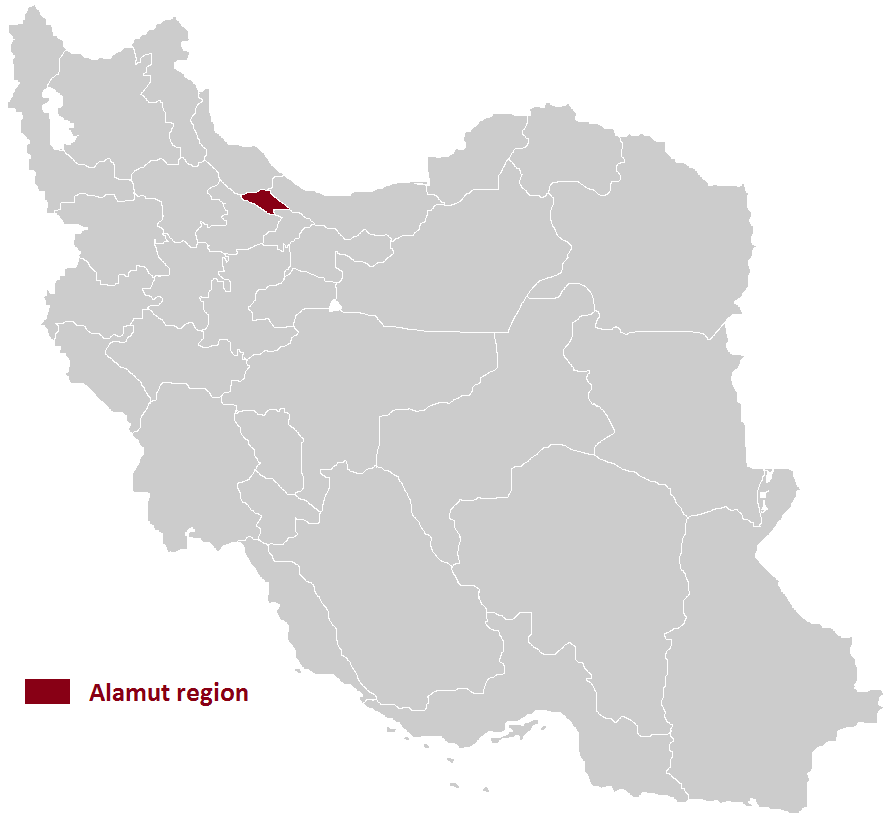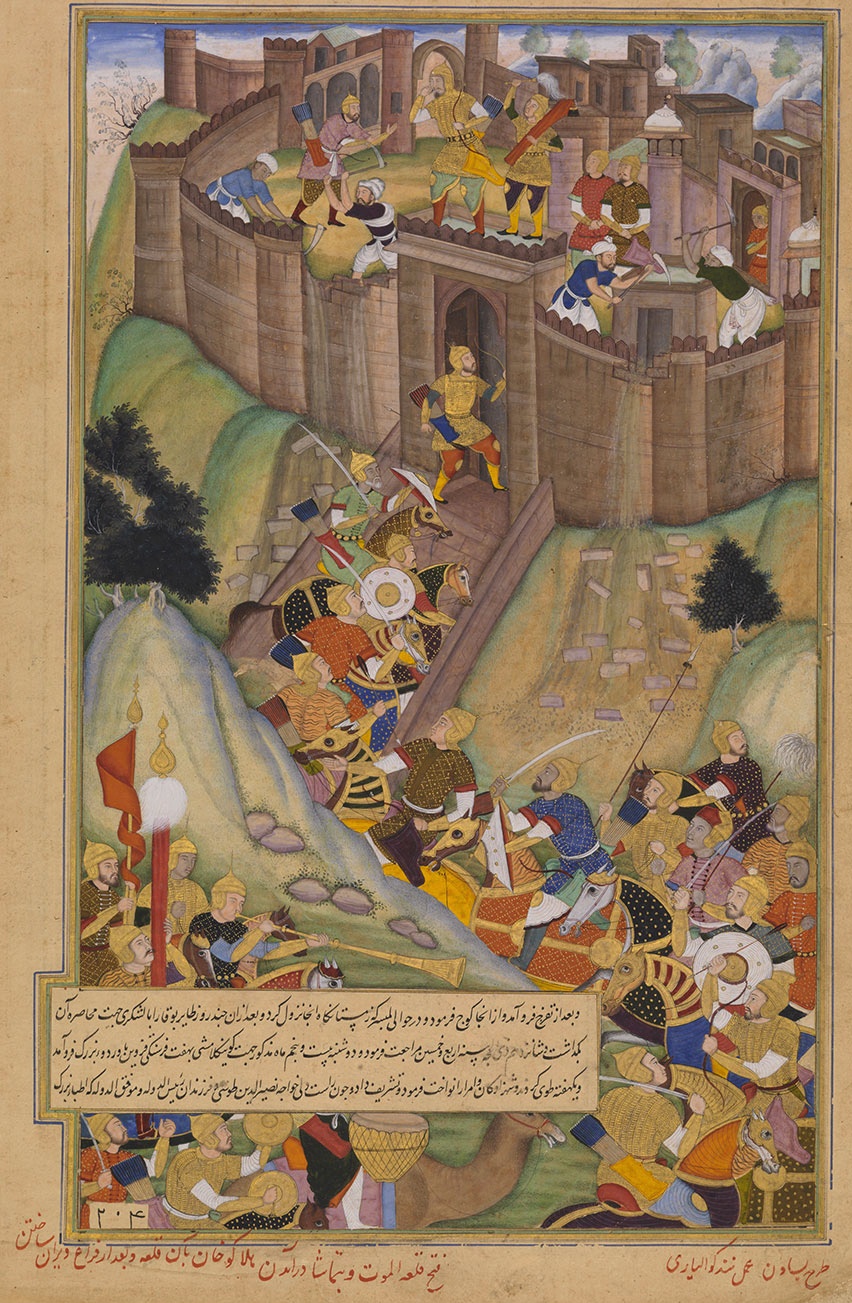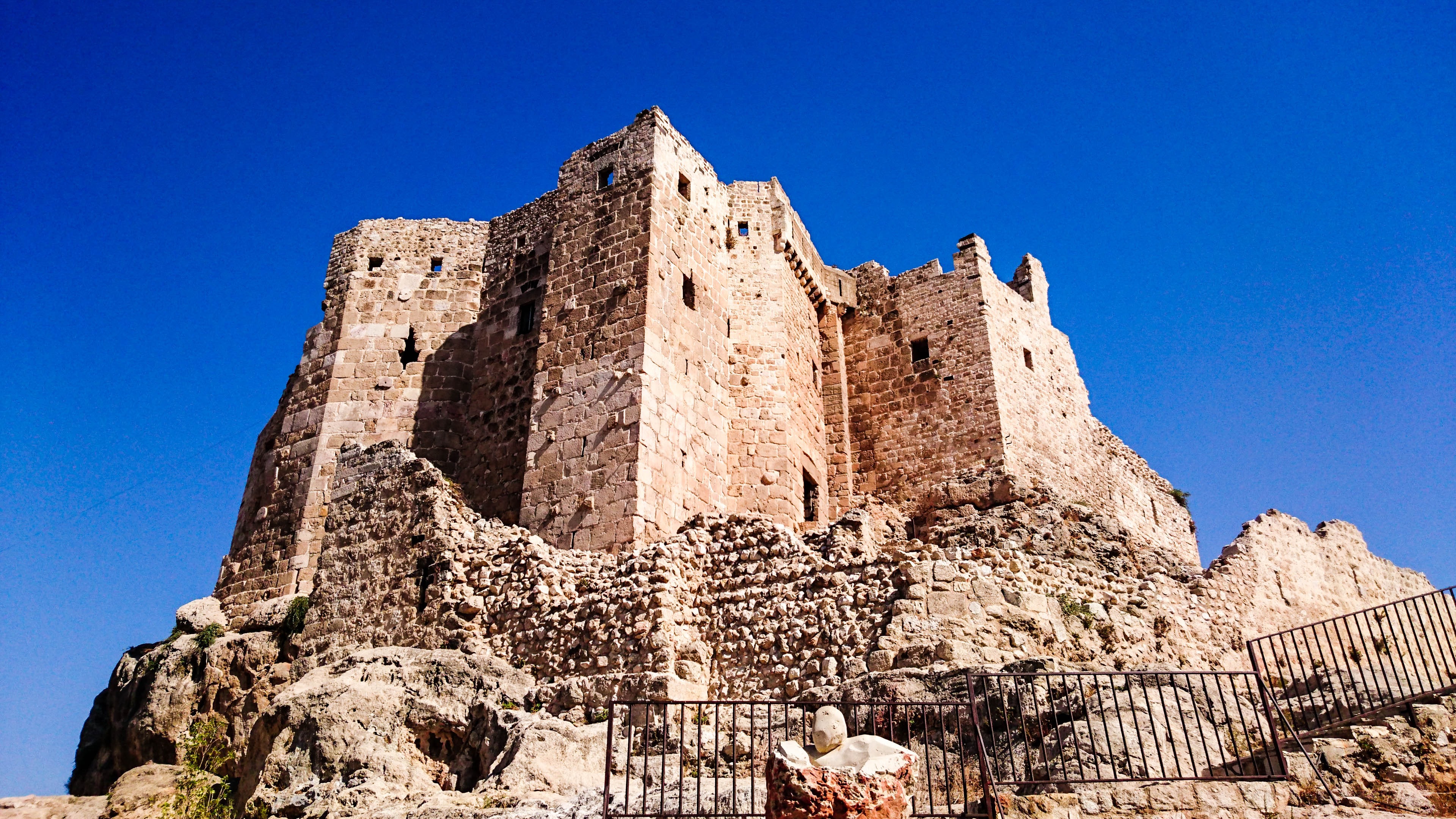|
Alamut
Alamut ( fa, الموت) is a region in Iran including western and eastern parts in the western edge of the Alborz (Elburz) range, between the dry and barren plain of Qazvin in the south and the densely forested slopes of the Mazandaran province in the north. Starting from Qazvin toward Alamut, passing through the first range of hills, curvatures, forms, are significant themes in nature's composition of this area. The famous Ismaili castle of Alamut and numerous others are in this area, which served as the heartland of the state founded by Hassan-i Sabbah. According to some sources, the majority of people in northern Qazvin (Alamut) are Tats who speak a dialect of the Tati language.گونههای زبانی تاتی، دونالد استیلو، ۱۹۸۱ However, other sources claim that the majority of people in Alamut are Mazanderani or Gilaks who speak a dialect of the Mazanderani language or Gilaki language. According to some linguists, the term ‘Tati’ was us ... [...More Info...] [...Related Items...] OR: [Wikipedia] [Google] [Baidu] |
Alamut Castle
Alamut ( fa, wikt:الموت, الموت, meaning "eagle's nest") is a ruined mountain fortress located in the Alamut region in the South Caspian Sea, Caspian province of Qazvin near the Masudabad, Qazvin, Masoudabad region in Iran, approximately 200 km (130 mi) from present-day Tehran. In 1090 AD, the Alamut Castle, a mountain fortress in present-day Iran, came into the possession of Hassan-i Sabbah, a champion of the Nizari Isma'ilism, Nizari Ismaili cause. Until 1256, Alamut functioned as the headquarters of the Nizari Ismaili state, which included a series of List_of_Ismaili_strongholds, strategic strongholds scattered throughout Persia and Syria, with each stronghold being surrounded by swathes of hostile territory. Alamut, which is the most famous of these strongholds, was thought impregnable to any military attack and was fabled for its heavenly gardens, library, and laboratories where philosophers, scientists, and theologians could debate in intellectual freedom. ... [...More Info...] [...Related Items...] OR: [Wikipedia] [Google] [Baidu] |
Order Of Assassins
The Order of Assassins or simply the Assassins ( fa, حَشّاشین, Ḥaššāšīn, ) were a Nizārī Ismāʿīlī order and sect of Shīʿa Islam that existed between 1090 and 1275 CE. During that time, they lived in the mountains of Persia and in Syria, and held a strict subterfuge policy throughout the Middle East through the covert murder of Muslim and Christian leaders who were considered enemies of the Nizārī Ismāʿīlī State. The modern term assassination is believed to stem from the tactics used by the Assassins. Nizārī Ismāʿīlīsm formed in the late 11th century after a succession crisis within the Fatimid Caliphate between Nizār ibn al-Mustanṣir and his half-brother, caliph al-Musta‘lī. Contemporaneous historians include Arabs ibn al-Qalanisi and Ali ibn al-Athir, and the Persian Ata-Malik Juvayni. The first two referred to the Assassins as ''batiniyya'', an epithet widely accepted by Ismāʿīlīs themselves. Overview The Nizari Isma'il ... [...More Info...] [...Related Items...] OR: [Wikipedia] [Google] [Baidu] |
Nizārī Ismā'īlī State
The Nizari state (the Alamut state) was a Shia Nizari Ismaili state founded by Hassan-i Sabbah after he took control of the Alamut Castle in 1090 AD, which marked the beginning of an era of Ismailism known as the "Alamut period". Their people were also known as the ''Order of Assassins, Assassins'' or ''Hashashins''. The state consisted of a nexus of strongholds throughout Greater Iran, Persia and Syria (region), Syria, with their territories being surrounded by huge swathes of hostile territory. It was formed as a result of a religious and political movement of the minority Nizari sect supported by the anti-Seljuq Empire, Seljuk population. Being heavily outnumbered, the Nizaris resisted adversaries by employing List of Ismaili castles, strategic, self-sufficient fortresses and the use of unconventional tactics, notably List of assassinations by the Assassins, assassination of important adversaries and psychological warfare. Despite Nizari–Seljuk conflicts, being occupied with ... [...More Info...] [...Related Items...] OR: [Wikipedia] [Google] [Baidu] |
Nizari Ismaili State
The Nizari state (the Alamut state) was a Shia Nizari Ismaili state founded by Hassan-i Sabbah after he took control of the Alamut Castle in 1090 AD, which marked the beginning of an era of Ismailism known as the "Alamut period". Their people were also known as the ''Assassins'' or ''Hashashins''. The state consisted of a nexus of strongholds throughout Persia and Syria, with their territories being surrounded by huge swathes of hostile territory. It was formed as a result of a religious and political movement of the minority Nizari sect supported by the anti-Seljuk population. Being heavily outnumbered, the Nizaris resisted adversaries by employing strategic, self-sufficient fortresses and the use of unconventional tactics, notably assassination of important adversaries and psychological warfare. Despite being occupied with survival in their hostile environment, the Ismailis in this period developed a sophisticated outlook and literary tradition. Almost two centuries after ... [...More Info...] [...Related Items...] OR: [Wikipedia] [Google] [Baidu] |
Alamut Region In Iran
Alamut ( fa, الموت) is a region in Iran including western and eastern parts in the western edge of the Alborz (Elburz) range, between the dry and barren plain of Qazvin in the south and the densely forested slopes of the Mazandaran province in the north. Starting from Qazvin toward Alamut, passing through the first range of hills, curvatures, forms, are significant themes in nature's composition of this area. The famous Ismaili castle of Alamut and numerous others are in this area, which served as the heartland of the state founded by Hassan-i Sabbah. According to some sources, the majority of people in northern Qazvin (Alamut) are Tats who speak a dialect of the Tati language.گونههای زبانی تاتی، دونالد استیلو، ۱۹۸۱ However, other sources claim that the majority of people in Alamut are Mazanderani or Gilaks who speak a dialect of the Mazanderani language or Gilaki language. According to some linguists, the term ‘Tati’ was used b ... [...More Info...] [...Related Items...] OR: [Wikipedia] [Google] [Baidu] |
Hasan Bin Sabbah
Hasan-i Sabbāh ( fa, حسن صباح) or Hassan as-Sabbāh ( ar, حسن بن الصباح الحميري, full name: Hassan bin Ali bin Muhammad bin Ja'far bin al-Husayn bin Muhammad bin al-Sabbah Himyarite Kingdom, al-Himyari; c. 1050 – 12 June 1124) was the founder of the Nizari Ismaili state, Nizari Isma'ili state and its fedayeen, ''fidā'i'' military groupLewis, Bernard (1967), ''The Assassins: a Radical Sect of Islam'', pp 38-65, Oxford University Press known as the Order of Assassins, often referred also as the ''Hashshashin''. Since Marco Polo, he has been known in the Western culture, West as the Old Man of the Mountain. He later seized a mountain fortress called Alamut Castle, Alamut. Sources Hasan is thought to have written an autobiography, which did not survive but seems to underlie the first part of an anonymous Isma'ili biography entitled ''Sargozasht-e Seyyednā'' ( fa, سرگذشت سیدنا). The latter is known only from quotations made by later Persian au ... [...More Info...] [...Related Items...] OR: [Wikipedia] [Google] [Baidu] |
Hassan-i Sabbah
Hasan-i Sabbāh ( fa, حسن صباح) or Hassan as-Sabbāh ( ar, حسن بن الصباح الحميري, full name: Hassan bin Ali bin Muhammad bin Ja'far bin al-Husayn bin Muhammad bin al-Sabbah al-Himyari; c. 1050 – 12 June 1124) was the founder of the Nizari Isma'ili state and its ''fidā'i'' military groupLewis, Bernard (1967), ''The Assassins: a Radical Sect of Islam'', pp 38-65, Oxford University Press known as the Order of Assassins, often referred also as the ''Hashshashin''. Since Marco Polo, he has been known in the West as the Old Man of the Mountain. He later seized a mountain fortress called Alamut. Sources Hasan is thought to have written an autobiography, which did not survive but seems to underlie the first part of an anonymous Isma'ili biography entitled ''Sargozasht-e Seyyednā'' ( fa, سرگذشت سیدنا). The latter is known only from quotations made by later Persian authors. Daftary, Farhad, ''The Isma'ilis'', p. 311. Hasan also wrote a treatise, i ... [...More Info...] [...Related Items...] OR: [Wikipedia] [Google] [Baidu] |
List Of Ismaili Castles
List of the strongholds or dar al-hijra of the Nizari Ismaili state in Persia (Iran) and Syria. Most of the Persian Ismaili castles were in the Alborz mountains, in the regions of Daylaman (particularly, in Alamut and Rudbar; north of modern-day Qazvin) and Quhistan (south of Khurasan), as well as in Qumis. Most of the Syrian Ismaili castles were in Jabal Bahra' (Syrian Coastal Mountain Range). According to Juzjani, before the Mongol invasion the Nizaris possessed 70 forts in Quhistan and 35 in Alamut. Overall, they probably had 250 castles. The Ismaili fortresses in Rudbar of Alamut had been built on rocky heights and were equipped to withstand long sieges; they had storehouses with high capacities and elaborate water supply infrastructure such as cisterns, qanats, and canals. Persia Syria The strongholds in Jabal Bahra' were known as the "Castles of the ''da'wa''" ( ''qilāʿ al-daʿwah''). See also *Nizari Ismaili state *History of Nizari Ismailism *List of castl ... [...More Info...] [...Related Items...] OR: [Wikipedia] [Google] [Baidu] |
Hassan II (imam)
Ḥasan ʿAlā Zikrihi's-Salām (Persian/ ar, حسن على ذكره السلام) or Hassan II was the hereditary Imam of the Nizari Isma'ilis of the Alamut Period from 1162 until 1166. From his capital of Alamut he ruled parts of Persia and Syria. His chief subordinate in Syria was Rashid ad-Din Sinan, the Old Man of the Mountain. Biography In 1164 Hassan, leading the Nizari sect of Ismaili Islam, proclaimed the ''Qiyamat'', the abrogation of Sharia law. The concept of ''Qiyamah'' in exoteric Islam means the End of the World and the Day of Judgment. But in the esoteric interpretations of Ismaili Islam, Qiyamah is the beginning of an era of spiritual renaissance where the spiritual dimensions of Islam will be practiced openly, spiritual truths will become widely known, and certain ritualistic aspects of Islam will be abrogated. Fatimid Ismaili texts from the 10th-11th century describe the anticipated arrival of the ''Qiyamah'' era by a future Fatimid Ismaili Imam. These expecta ... [...More Info...] [...Related Items...] OR: [Wikipedia] [Google] [Baidu] |
East Alamut District
Alamut-e Sharqi District ( fa, بخش الموت شرقی), meaning "East Alamut District", formerly Rudbar-e Alamut District, is a district ( bakhsh) in Qazvin County, Qazvin Province, Iran. At the 2006 census, its population was 12,519, in 4,128 families. The District has one city: Moallem Kalayeh. The District has three rural districts (''dehestan''): Alamut-e Bala Rural District, Alamut-e Pain Rural District, and Moallem Kalayeh Rural District. The majority of people in the district are Tats who speak a dialect of the Tati language.A minority of Azerbaijani people Azerbaijanis (; az, Azərbaycanlılar, ), Azeris ( az, Azərilər, ), or Azerbaijani Turks ( az, Azərbaycan Türkləri, ) are a Turkic people living mainly in northwestern Iran and the Republic of Azerbaijan. They are the second-most numer ... also live in this part See Also * Dineh Kuh References Districts of Qazvin Province Qazvin County {{QazvinCounty-geo-stub ... [...More Info...] [...Related Items...] OR: [Wikipedia] [Google] [Baidu] |
Kiya Buzurg-Ummid
Kiyā Buzurg-Ummīd ( fa, کیا بزرگ امید; died 1138) was a ''dawah, dāʿī'' and the second ruler (''da'i'') of the Nizari Ismaili state#Rulers and Imams, Nizari Isma'ili State, ruling Alamut Castle from 1124 to 1138 CE (or 518—532 AH). He was of Dailamite, Daylami origin from the region of Alamut, Rudbar. Career Prior to ruling the Nizari Isma'ilis, Buzurg Ummid captured Lambsar Castle for the Order of Assassins, Assassins and ruled it as commander for over twenty years. As the ruler of Alamut On 25 Rabīʿ II 518 (11 June 1124), a day before death of Hassan-i Sabbah, Ḥassan-i Ṣabbaḥ, Ḥassan appointed him his successor. He generally followed the policies of Hassan-i Sabbah, Ḥassan-i Ṣabbaḥ and enforced the Sharia strictly. In his early reign the Isma'ili hold was expanded in particular in Eshkevar and Taleghan. As opposed to Hassan Sabbah, who is depicted as a revolutionary leader, the Ismaili sources depict Buzurg-Ummid as an administrator and a ch ... [...More Info...] [...Related Items...] OR: [Wikipedia] [Google] [Baidu] |
Buzurg-Ummid
Muḥammad ibn Buzurg-Ummīd ( fa, محمد بن بزرگ امید) (died February 20, 1162) was the son of Kiyā Buzurg-Ummīd, and the third ruler of the Nizari Ismailis from 1138 until 1162 based in Alamut. Career Upon the demise of Kiyā Buzurg-Ummīd on February 9, 1138, he was appointed as the commander of Alamut Castle by the third concealed Imam Hasan Al-Qāhir ibn Al-Muḥammad (القاهر) of the Nizārī Ismā'īlī state The Nizari state (the Alamut state) was a Shia Nizari Ismaili state founded by Hassan-i Sabbah after he took control of the Alamut Castle in 1090 AD, which marked the beginning of an era of Ismailism known as the "Alamut period". Their people wer .... He died in 1162 and was succeeded by his son Hasan ‘Alā Dhīkr‘īhī's-Salām. Succession References External links Muhammad bin Kiya Buzrug Ummid 1162 deaths Medieval legends Iranian missionaries Iranian Ismailis People from Alamut Daylamites 12th-century Iranian p ... [...More Info...] [...Related Items...] OR: [Wikipedia] [Google] [Baidu] |




.jpeg)




